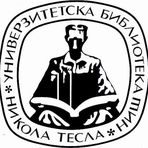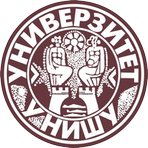Title
Hemijska analiza i farmakološki efekti ekstrakata i soka ploda aronije, Aronia melanocarpa (Michx.) elliott
Creator
Milutinović, Milica, 1986-
Copyright date
2020
Object Links
Select license
Autorstvo-Nekomercijalno-Bez prerade 3.0 Srbija (CC BY-NC-ND 3.0)
License description
Dozvoljavate samo preuzimanje i distribuciju dela, ako/dok se pravilno naznačava ime autora, bez ikakvih promena dela i bez prava komercijalnog korišćenja dela. Ova licenca je najstroža CC licenca. Osnovni opis Licence: http://creativecommons.org/licenses/by-nc-nd/3.0/rs/deed.sr_LATN. Sadržaj ugovora u celini: http://creativecommons.org/licenses/by-nc-nd/3.0/rs/legalcode.sr-Latn
Language
Serbian
Cobiss-ID
Theses Type
Doktorska disertacija
description
Datum odbrane: 16.07.2020.
Other responsibilities
mentor
Kitić, Dušanka, 1965-
član komisije
Cvetković, Tatjana
član komisije
Branković, Suzana
član komisije
Janković Veličković, Ljubinka
član komisije
Šavikin, Katarina
Academic Expertise
Medicinske nauke
University
Univerzitet u Nišu
Faculty
Medicinski fakultet
Group
Katedra za farmakologiju sa toksikologijom
Alternative title
Chemical analysis and pharmacological effects of chokeberry fruit extract and juice, Aronia melanocarpa (Michx.) Elliott
: doctoral dissertation
Publisher
[M. S. Milutinović]
Format
[16],187 listova
description
Beleška o autoru: list 187;
Bibliografija: listovi 150-182.
description
Pharmacognosy
Abstract (en)
The aim of the doctoral dissertation is to define the chemical composition and to examine the potential pharmacological effects of the chokeberry (Aronia melanocarpa (Michx.) Elliott) extracts and juice. In recent years, chokeberry fruits have been in the focus of scientific research because of their numerous pharmacological effects due to the high content of phenolic compounds, especially anthocyanins.
For the purpose of the experiment, three different samples were prepared, chokeberry juice (AS), fruit extract (AE), as well as a waste extract (AOE). A maceration method with 50% ethanol was used for the plant material extraction. After the extraction, the samples were lyophilized and chemically characterized using high-performance liquid chromatography (HPLC). The antioxidant activity was evaluated using two in vitro methods, DPPH (1,1-diphenyl-2-picrylhydrazyl) and β-carotene-linoleic acid assay. The antimicrobial activity of the samples was tested against bacterial and fungal laboratory strains using a micro-dilution method. The spasmolytic activity of chokeberry extracts and juice were examined on spontaneous and induced contractions of the isolated ileum, while vasorelaxant effects were evaluated on the isolated rat aorta. The protective effects of the chokeberry preparation in the cisplatin-induced rat kidney and liver damage were evaluated by the values of biochemical, antioxidant and inflammatory parameters in blood and tissues, as well as by the histopathological analyses of the kidney and liver tissue.
The highest content of phenolic compounds and anthocyanins was determined in AOE. HPLC analysis showed that cyanidin-3-O-galactoside was the most abundant compound. Chokeberry extracts and juice were potent antioxidants in vitro. The investigated preparations exhibited inhibitory activity on the growth of the used microbial strains. Gram (+) bacteria were slightly more sensitive than Gram (-) bacteria and fungus. The preparations dose-dependently inhibited spontaneous and induced contractions of the rat ileum and aorta, with a significant difference in the effects of extracts and juice due to their chemical composition. The chokeberry preparations could alleviate the kidney and liver damage caused by the nephrotoxicity and hepatotoxicity of cisplatin, while the protective effects resulted from their antioxidant and anti-inflammatory activity in plasma and tissues.
The results of the research have scientifically confirmed the pharmacological use of the chokeberry fruit and its potential application in modern phytotherapy. These pharmacological effects need to be confirmed by relevant clinical studies.
Authors Key words
Aronia melanocarpa (Michx.) Elliott, ekstrakti, sok, fenoli, antocijani, proantocijanidini, flavonoidi, antioksidativna aktivnost, antimikrobna
aktivnost, spazmolitička aktivnost, vazorelaksantna aktivnost, nefroprotektivna aktivnost, hepatoprotektivna aktivnost
Authors Key words
Aronia melanocarpa (Michx.) Elliott, extracts, juice, phenols, anthocyanins, proanthocyanidins, flavonoids, antioxidant activity, antimicrobial activity, spasmolytic activity, vasorelaxant activity, nephroprotective activity, hepatoprotective activity
Classification
634.74:615.322:543.6(043.3)
Subject
B 740
Type
Tekst
Abstract (en)
The aim of the doctoral dissertation is to define the chemical composition and to examine the potential pharmacological effects of the chokeberry (Aronia melanocarpa (Michx.) Elliott) extracts and juice. In recent years, chokeberry fruits have been in the focus of scientific research because of their numerous pharmacological effects due to the high content of phenolic compounds, especially anthocyanins.
For the purpose of the experiment, three different samples were prepared, chokeberry juice (AS), fruit extract (AE), as well as a waste extract (AOE). A maceration method with 50% ethanol was used for the plant material extraction. After the extraction, the samples were lyophilized and chemically characterized using high-performance liquid chromatography (HPLC). The antioxidant activity was evaluated using two in vitro methods, DPPH (1,1-diphenyl-2-picrylhydrazyl) and β-carotene-linoleic acid assay. The antimicrobial activity of the samples was tested against bacterial and fungal laboratory strains using a micro-dilution method. The spasmolytic activity of chokeberry extracts and juice were examined on spontaneous and induced contractions of the isolated ileum, while vasorelaxant effects were evaluated on the isolated rat aorta. The protective effects of the chokeberry preparation in the cisplatin-induced rat kidney and liver damage were evaluated by the values of biochemical, antioxidant and inflammatory parameters in blood and tissues, as well as by the histopathological analyses of the kidney and liver tissue.
The highest content of phenolic compounds and anthocyanins was determined in AOE. HPLC analysis showed that cyanidin-3-O-galactoside was the most abundant compound. Chokeberry extracts and juice were potent antioxidants in vitro. The investigated preparations exhibited inhibitory activity on the growth of the used microbial strains. Gram (+) bacteria were slightly more sensitive than Gram (-) bacteria and fungus. The preparations dose-dependently inhibited spontaneous and induced contractions of the rat ileum and aorta, with a significant difference in the effects of extracts and juice due to their chemical composition. The chokeberry preparations could alleviate the kidney and liver damage caused by the nephrotoxicity and hepatotoxicity of cisplatin, while the protective effects resulted from their antioxidant and anti-inflammatory activity in plasma and tissues.
The results of the research have scientifically confirmed the pharmacological use of the chokeberry fruit and its potential application in modern phytotherapy. These pharmacological effects need to be confirmed by relevant clinical studies.
“Data exchange” service offers individual users metadata transfer in several different formats. Citation formats are offered for transfers in texts as for the transfer into internet pages. Citation formats include permanent links that guarantee access to cited sources. For use are commonly structured metadata schemes : Dublin Core xml and ETUB-MS xml, local adaptation of international ETD-MS scheme intended for use in academic documents.


